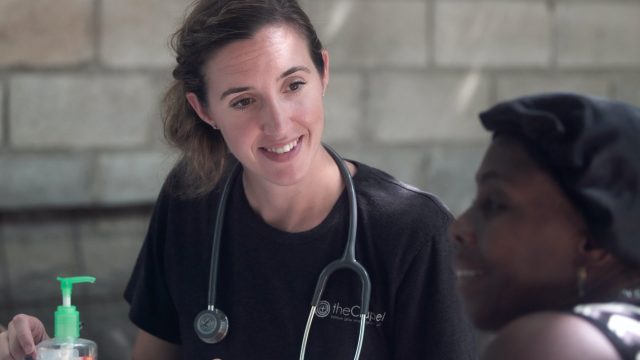Health Disparities: Minimizing Societal Inequities’ Impact in Patient Care
By Felecia Sheffield PhD
Authors: Felecia D. Sheffield, PhD and Mary E. Ray, M.D.
 The United States has a long and well documented history of systemic disparities. These disparities exist in many areas including employment, education, housing and health. Healthy People 2020 defines a health disparity as “a particular type of health difference that is closely linked with social, economic, and/or environmental disadvantage. Health disparities adversely affect groups of people who have systematically experienced greater obstacles to health based on their racial or ethnic group; religion; socioeconomic status; gender; age; mental health; cognitive, sensory, or physical disability; sexual orientation or gender identity; geographic location; or other characteristics historically linked to discrimination or exclusion.”
The United States has a long and well documented history of systemic disparities. These disparities exist in many areas including employment, education, housing and health. Healthy People 2020 defines a health disparity as “a particular type of health difference that is closely linked with social, economic, and/or environmental disadvantage. Health disparities adversely affect groups of people who have systematically experienced greater obstacles to health based on their racial or ethnic group; religion; socioeconomic status; gender; age; mental health; cognitive, sensory, or physical disability; sexual orientation or gender identity; geographic location; or other characteristics historically linked to discrimination or exclusion.”
 Women and racial and ethnic minorities have been shown to receive less accurate diagnoses, curtailed treatment options, less pain management, and found to have worse clinical outcomes. Pregnancy-related mortality rates are 3-4 x higher for non-Hispanic Black women in comparison to their non-Hispanic Caucasian counterparts. In 2014, researchers found that Native Americans and Alaskan Natives have an infant mortality rate 60 percent higher than the rate for their white counterparts. Both Black and Hispanic women have been shown to have higher unintended pregnancy rates than their Caucasian peers, which has also been shown to be linked to multiple adverse perinatal outcomes. Even outside of the civilian healthcare system, disparities have been among military veterans as it relates to healthcare access, use of health care, and higher prevalence rates of certain chronic diseases. As with healthcare in general, access to mental health treatment and lack of health insurance are associated with significant mental healthcare disparities among ethnic minorities.
Women and racial and ethnic minorities have been shown to receive less accurate diagnoses, curtailed treatment options, less pain management, and found to have worse clinical outcomes. Pregnancy-related mortality rates are 3-4 x higher for non-Hispanic Black women in comparison to their non-Hispanic Caucasian counterparts. In 2014, researchers found that Native Americans and Alaskan Natives have an infant mortality rate 60 percent higher than the rate for their white counterparts. Both Black and Hispanic women have been shown to have higher unintended pregnancy rates than their Caucasian peers, which has also been shown to be linked to multiple adverse perinatal outcomes. Even outside of the civilian healthcare system, disparities have been among military veterans as it relates to healthcare access, use of health care, and higher prevalence rates of certain chronic diseases. As with healthcare in general, access to mental health treatment and lack of health insurance are associated with significant mental healthcare disparities among ethnic minorities.
 Given the above, health care providers must ensure they are doing their part to not only bring awareness to societal inequities, but also recognize the impact they can have on treatment delivery, patient self-management and collaborative treatment planning between provider and patient. The strategies listed below are not a comprehensive solution to a systemic problem, only some suggested first steps opening up dialogue, encouraging systemic assessments and highlighting the importance of continuous monitoring and process improvement.
Given the above, health care providers must ensure they are doing their part to not only bring awareness to societal inequities, but also recognize the impact they can have on treatment delivery, patient self-management and collaborative treatment planning between provider and patient. The strategies listed below are not a comprehensive solution to a systemic problem, only some suggested first steps opening up dialogue, encouraging systemic assessments and highlighting the importance of continuous monitoring and process improvement.
Self-assessment:
Be vigilant in continuously monitoring our own implicit biases regarding groups different from our own. Champion cultural competency as a norm through ongoing staff development training, subject matter expert consultation, anti-racist education, case consultations, and peer reviews.
 Ask Questions:
Ask Questions:
Don’t be afraid to politely ask your patients and peers instead of assuming particular practices, beliefs and behaviors hold true for all members of a particular racial or ethnic group.
Collaborative Treatment Planning:
Be mindful that treatment planning is a collaborative process between the patient and treatment providers. Allow the patient to give input and actively listen to their concerns.
Challenges in Medication Adherence:
Assess medication adherence in your patients on a regular basis. Discuss non-compliance and factors possibly impacting adherence, including historical or cultural mistrust and/or barriers to treatment.
 Relationship/Family Dynamics:
Relationship/Family Dynamics:
Facilitate patients being able to discuss their concerns privately without their spouse or family member in attendance. Discuss outlined treatment plan with partners only with patient consent. For teenage minors, encourage parents to allow a split appointment in which their teenager can be seen alone before having the parent/guardian rejoin the appointment towards the end.
Language Barriers:
Allow for professional translators to be used, and arrange them in advance. Do not assume that patients want their friend or family member to be privy to their health information because they brought them to their appointment. Normalize translator use and make it clear this is not an inconvenience in order to minimize self-consciousness about limited English proficiency.
 Financial Barriers:
Financial Barriers:
When outlining treatment recommendations, be mindful of any associated costs that could impede follow up or medication adherence. When possible, facilitate the patient being able to access drug discount programs. Do not assume that all patients are covered by health insurance.
Transportation Barriers:
Discuss with patients their ability to get to recommended follow up appointments or other medical consult referrals. When possible, discuss ways to schedule multiple appointments on the same day to minimize increased gas, toll costs, or the patient’s reliance on others for transportation.
 Patient Surveys:
Patient Surveys:
Utilize a patient survey to obtain their feedback regarding the care they receive. Pay particular attention to patterns and consistently deficient areas. Create a corrective action plan to address complaints/areas of concerns.
Staff Training:
Organizations are encouraged to ensure that staff are regularly trained on cultural competency including how multiple demographic factors impact provision of care to patients. Ensure that staff incorporates cultural competency expectations as part of regular processes and procedures.
Authors:
Dr. Sheffield is a Licensed Clinical Psychologist with extensive clinical, treatment and program management experience with socioeconomically and ethnically diverse adults and youth. She consults domestically and internationally and has worked with non-profits, schools, hospitals, and clinics. Dr. Sheffield has written over three dozen parenting and self-help articles for the general public. Her volunteer endeavors include being a part of the Science Cheerleaders, a national non-profit 501(c)3 organization comprised of current and former NFL/NBA professional cheerleaders with STEM degrees who engage, encourage, and empower kids and young women to pursue science, technology, engineering and math careers.
Dr. Ray is a licensed physician, adjunct professor, and trainer. She specializes in family medicine and has extensive experience working with patients of all ages and ethnic backgrounds. As an educator, she enjoys implementing interactive trainings focused on evidenced based practices and decreasing healthcare disparities. Dr. Ray is currently pursuing a Master’s degree in public health while living overseas and practicing in a primary care clinic. � � �
Article Source: https://EzineArticles.com/expert/Felecia_Sheffield_PhD/60179
